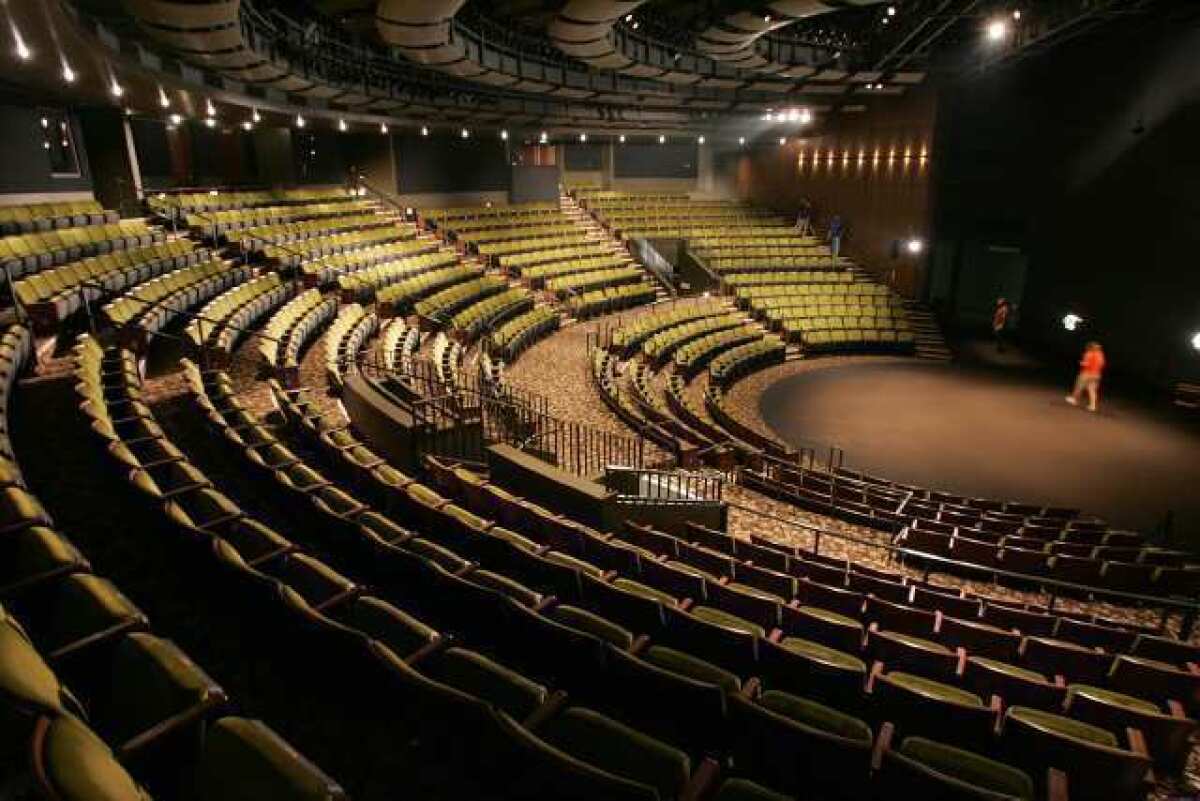Nonprofit theaters’ fiscal mood improving, national survey shows

- Share via
America’s nonprofit theaters are feeling a bit better about their finances these days, according to a recent survey conducted by the sector’s main national service organization, Theatre Communications Group.
But the actors, directors and designers who work in those theaters shouldn’t bank on a trickle-down effect boosting their standard of living.
Asked to list their top five priorities for the coming year, only 19% of the 206 theaters surveyed by TCG and its partner, the Assn. of Performing Arts Service Organizations, listed increasing employment and compensation for artists as an important objective. The leading priorities instead had to do with raising more money and attracting bigger audiences. If producers succeed on that score, perhaps bigger cast sizes and better actor paydays will be in store ... eventually.
The brief survey, entitled “Taking Your Fiscal Pulse, 2012” and released Thursday, was circulated in early fall and was characterized by TCG as a “snapshot” of how the theater scene is doing financially. The theaters surveyed were a cross section -- 69 had annual budgets of $50,000 or less, 61 had budgets of $3 million or more, and 76 were in between.
Asked to describe how their organization was doing overall, half of the respondents said they were “holding steady,” 40% said they felt they were “on the upswing,” and 10% lamented that things were getting worse. Overall, that reflects a slightly improved mood from the 2011 survey, in which 36% said they were upbeat and 11% said they were downcast.
Underlying the mood improvement was a general avoidance of unpleasant fiscal surprises. Almost half the theaters (49%) reported exceeding their budgeted box office take for the 2011-12 season (or, for some, a not-yet-finished 2012 calendar year season). Only 29% reported shortfalls.
Theaters also by and large hit or exceeded their fundraising marks.
Their own trustees came through most consistently, with 77% of the companies reporting that board members met or surpassed their expected giving. The figure was 72% for giving by other individuals, and 73% for government contributions -- which might reflect lowered expectations for what federal, state and local arts agencies are willing or able to give, rather than any increase in actual grants. Foundations (67%) and corporations (57%) were less likely to match or exceed theaters’ philanthropic expectations.
It all translated into a degree of optimism for the coming year, with 51% of respondents saying they planned to increase their budgets and 21% contemplating cuts. In a spring 2010 survey -- about a year after the end of the December 2007 to June 2009 Great Recession -- only 30% of the surveyed theaters said they were planning budget increases.
The survey also seemed to confirm the conventional wisdom that the traditional season subscription model is gradually losing its box-office mojo because people increasingly want to keep their entertainment options open instead of committing to (and paying for) a series of shows far in advance.
While 64% of all theaters said they met or exceeded their budgeted subscription income, that was true for only 53% of the big theaters, who generally managed to make it up via better-than-projected single-ticket sales.
RELATED:
You paid how much for that ticket?
Gustavo Dudamel’s salary hints at a good-value return
“Les Miz” beats Ahmanson box office marks set by “Jersey Boys”
MORE
INTERACTIVE: Christopher Hawthorne’s On the Boulevards
TIMELINE: John Cage’s Los Angeles
PHOTOS: Arts and culture in pictures
More to Read
The biggest entertainment stories
Get our big stories about Hollywood, film, television, music, arts, culture and more right in your inbox as soon as they publish.
You may occasionally receive promotional content from the Los Angeles Times.











